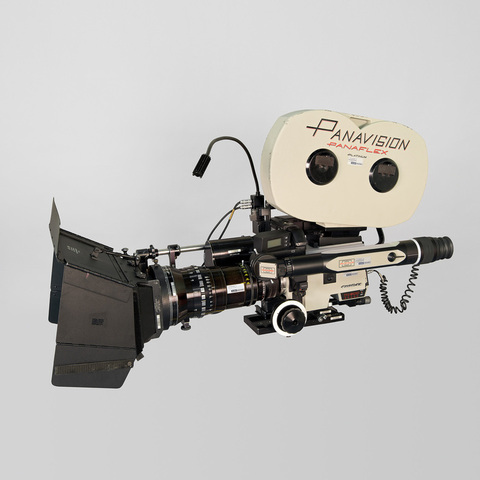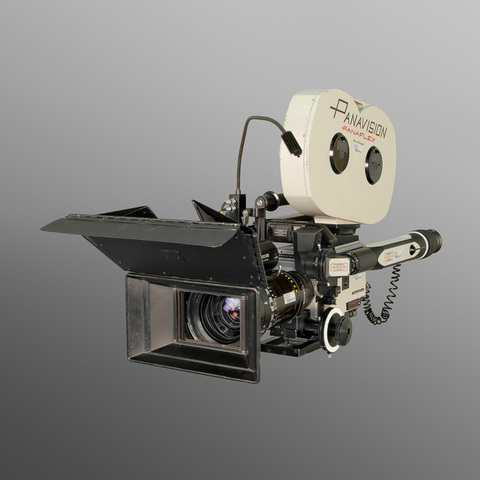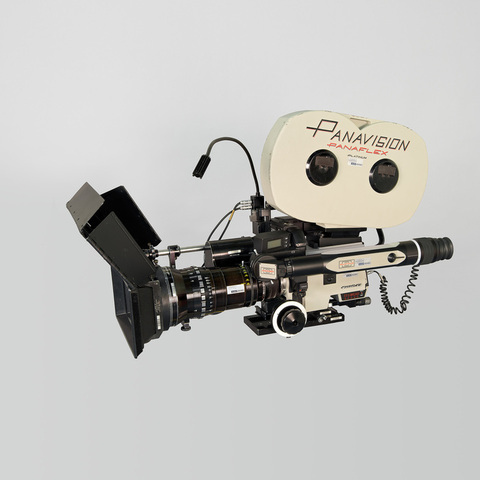Caméra film 35 mm
Fiche détaillée
Type de l'appareil
caméra de studio pouvant aussi être portée à l'épaule ; entraînement du film 35 mm par deux griffes et contre-griffes ; un débiteur denté ; vitesse variable 4-36 images/seconde ; obturateur variable 50-200° avec miroir rotatif ; Ground glass Panaglow ; visées reflex interchangeables longue et courte orientable 360° ; Advanced Vidéo PAV 2 ; magasin 1000 pieds avec compteur incorporé ; Wide Angle Matte Box avec fenêtres interchangeables ; deux poignées ; panneau LED ; compteur de mètre ; indicateur de batterie ; compteur digital ; tachymètre ; moteur incorporé à circuits électroniques ; lampe d'éclairage ; zoom Cooke 20-100 mm incorporé avec moteur électronique et pistolet de réglage à distance ; poignée
Auteurs
Gottschalk Robert E.
Woodland Hills, Californie
Fabricants
Panavision Inc.
Woodland Hills, 6219 De Soto Ave., Californie
Utilisateurs
Gottschalk Robert E.
Woodland Hills, Californie
Distributeurs
Panavision Inc.
Woodland Hills, 6219 De Soto Ave., Californie
Sujet du modèle
Informations non disponibles
Objectif
zoom 20-100 mm T3.1 Cooke Panavision Electronic Zoom Control ser. n° Z5-30
Taille de l'objet
Ouvert :
Informations non disponibles
Fermé :
Longueur : 104 cm
Largeur : 44 cm
Hauteur : 57 cm
Diamètre :
Informations non disponibles
Taille de la boîte de transport
Informations non disponibles
Remarques
Marques : "Super Panavision 35" ; "Mfd by and prop. of Panavision Los Angeles CA USA Ser. n° PCV 582 - W" ; "Mfd by and prop. of Panavision Los Angeles CA USA Ser. n° PFX - 453 - P" ; "Panavision AV2 ser. n° PAP2 - 393" ; "Panavision Electronic Zoom Control" ; "Panavision Panaflex Platinum".
"The Golden Panaflex, the world's most sophisticated motion picture camera, is literally the product of those who use it, for it has continously evolved into its present form through the suggestions and ideas contributed by the Directors of Photography, Operators, and Assistant Cameramen who recognize the Panaflex as the world's premier professionnal filmmaking instrument. Since the fall of 1972 when the original Panaflex camera was introduced, Panavision has actively solicited feedback from those who operate our equipment. On the basis of that information scores of modifications and improvements have been retro-fitted to the entire universe of Panaflexes. Panaflex 1 is as state-of-the-art as the latest serial number. The Panaflex was conceived in 1968 by Robert E. Gottschalk, who recognized that the PSR camera, while in constant demand, did not represent Panavision's full design capability. The PSR was an elegant conversion, but it was a camera in a blimp, and though significantly lighter and quieter than other studio cameras, was still cumbersome and heavy. An intense and highly secretive R&D team was set up to create what Robert envisioned as "a totally new generation of cameras". He saw a film-making instrument with features more advanced than those of any existing studio camera, yet light enough to be easily hand-held - a very compact, inherently quiet, silent reflex camera of impeccable design and versatility. Four years later Panavision designers, engineers, and craftsmen perfected the now-and-future camera would quickly earn a reputation as the industry's most reliable and flexible filmmaking tool. The first feature to be filmed with the Panaflex was Steven Spielberg's The Sugarland Express with Vilmos Zsigmond, ASC, as Director of Photography. In addition to Robert E. Gottschalk, the Panaflex design team included Al Mayer, Tak Miyagishima, Oliver Conway, George Kraemer, and Jack Barber. In 1978, the Panaflex was awarded an Oscar by the Academy of Motion Picture Arts and Sciences for its outstanding contribution to the art of film-making" (Brochure The Golden Panaflex, Tarzana, California, Panavision, 1983).
"How to create a Platinum Panaflex. You preserve all the strenghts, features, reliability and steadiness of a Panaflex. And then you start over. You re-think, refine. You extend its limits with technology. You create a camera that is ready for the future by making it quiet enough, bright enough and smart enough for the most demanding filmmakers in the world - today. [...] The Platinum Panaflex offers transition without trauma to a new age of motion picture filming. With the Platinum, you can enjoy all the advantages of high technology filmmaking with all the assurances and simplicity of operation that only a Panaflex can offer. The Platinum is the smartest camera in the world. Poweful, dependable micro-computers, dicretely housed inside the camera, let it quickly and accurately process and display information vital to your filming. This state of the art technology is surrounded bu the most experience-proven camera in the world. The rock-steady Platinum Panaflex movement makes a visible difference when filming opticals. That's because of Panavision's exclusive full-fit dual registration pins. Those same pins make a difference you can see in principal photography, as well. The Platinum also features a new high-torque, low profile motor and a newly designed sprocket assembly for silent and precise film transport. The Platinum incorporates the most precise film flange settings of any motion picture camera. This ensures flange accuracy in the greatest extremes of heat and cold. Subtle, yet sophisticated dual electronic panels provide information visible on noth sides of the camera with separate choices for each display. Information includes camera shutter angle, speed, time code and exposed film in feet and meters. It also indicates the presence of a behind-the-lens-filter. The Annunciator Panel LED warning lights indicate low battery, illegal speed, film jam, low light and out of film. Choose from over 330 crystal-controlled speeds from 4 to 36 FPS forward and reverse. For video-sync filming, simply flip the separate switch to 29.97 FPS. Focal plane shutter : the Panaflex is a rotating mirror reflex camera with a completely separate focal plane shutter which can be varied from 200 to 50 while filming. High-precision electronics read the shutter angle and display it accurately to 1/10 of a degree. This shutter is invaluable for creating special effects, filming with HMI's, or for increased sharpness with reduced strobing while panning. Film magazine : the new revolutionary mid-rib construction on Panavision's super silent 1000' magazines help make the Platinum the quietest camera in the world. [...] An LCD display lets you accurately monitor exposed footage, whether the magazine is on or off the camera. The quiet Platinum consistently achieves sound levels of 19 dba with film, when measured 1 meter from the film plane. It is the first and only studio camera quiet enough to shoot sync sound at 30 FPS. And it's the only camera in the world ready for digital sound" (Brochure Platinum 35 mm System, Tarzana, California, Panavision, s.d.).
Bibliographie
The Golden Panaflex, Tarzana, California, Panavision, 1983.
Panavision Incorporated Ultra Precision Equipment for the Motion Picture Industry, Tarzana, California, Panavision, 1982.


